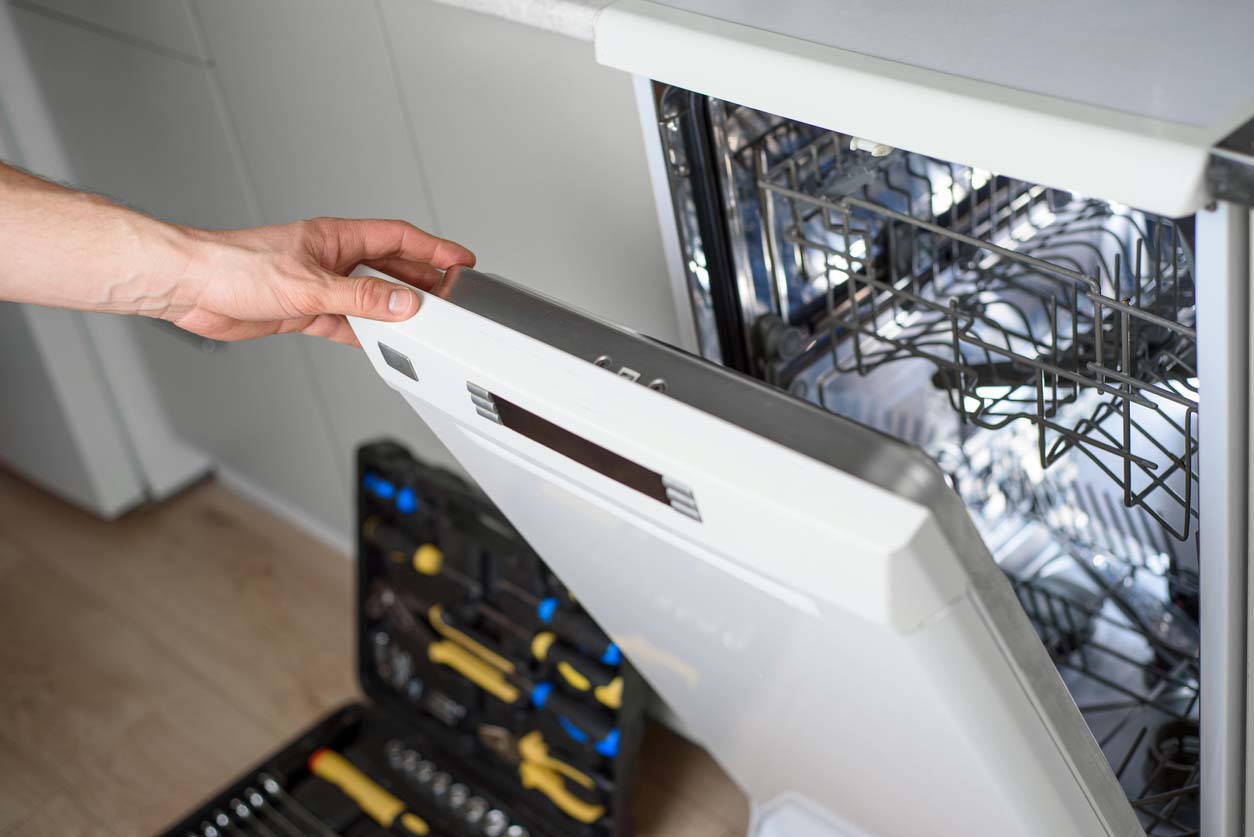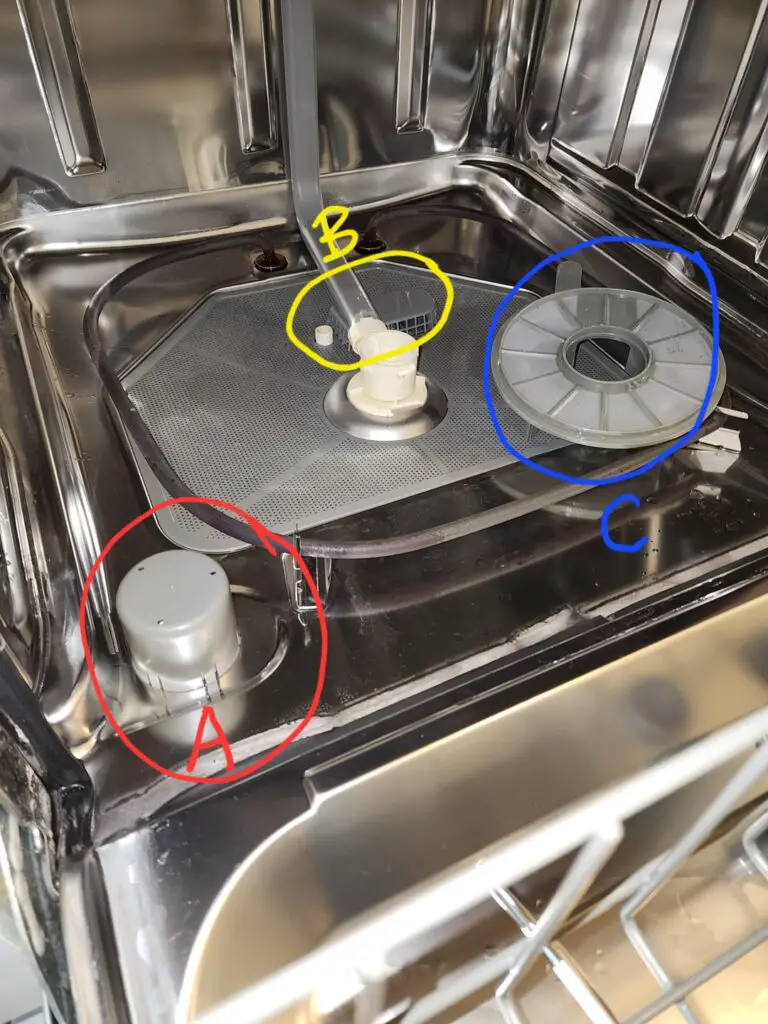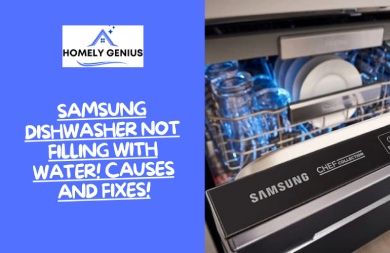Dish Washer Not Turning On? Top Fixes to Get It Working Again

The dishwasher not turning on could be due to a power issue or a faulty door latch. Check the power supply and door latch first.
A dishwasher is an essential appliance in many households, making daily chores easier. When it stops working, it can disrupt your routine. A common issue is the dishwasher not turning on, which can stem from several causes. Power supply problems, a malfunctioning door latch, or a blown fuse are often culprits.
Ensuring the appliance is correctly plugged in and the circuit breaker is functioning can solve the issue. Also, inspect the door latch to ensure it closes properly. Addressing these potential problems can help get your dishwasher running smoothly again.
Common Power Issues
Having trouble with your dishwasher not turning on? The issue might be related to common power problems. To help you troubleshoot, we have broken down the most common power issues.
Check Power Supply
First, ensure the dishwasher is properly plugged into a working outlet. Sometimes, the simplest problems are the easiest to overlook.
- Verify the outlet is live by plugging in another appliance.
- Check your home’s circuit breaker to see if it has tripped.
- Ensure the outlet is not controlled by a wall switch that is turned off.
These basic steps can often resolve the issue quickly.
Inspect Power Cord
Next, examine the power cord for any visible damage. A damaged power cord can prevent your dishwasher from turning on.
- Look for cuts, frays, or exposed wires on the cord.
- If the cord appears damaged, it will need replacing.
- Ensure the connection between the cord and the dishwasher is secure.
Inspecting the power cord can help identify problems that might not be immediately apparent.

Credit: www.youtube.com
Door Latch Problems
A common reason your dishwasher won’t turn on is door latch problems. The door latch ensures the dishwasher door is securely closed. A faulty latch prevents the dishwasher from starting. Let’s explore how to troubleshoot and fix this issue.
Examine Door Latch
First, inspect the door latch for visible damage. Look for cracks or broken pieces. A damaged latch won’t secure the door properly.
- Open the dishwasher door.
- Check the latch for any signs of wear.
- Ensure the latch mechanism is not blocked or dirty.
If the latch looks fine, test it manually. Close the door and listen for a click. The click indicates the latch is engaging. No click suggests a faulty latch.
Replace Faulty Latch
If the latch is damaged or doesn’t click, replace it. Follow these steps:
- Turn off the dishwasher and unplug it.
- Remove the inner door panel screws.
- Locate the door latch assembly.
- Disconnect the wires from the old latch.
- Install the new latch and reconnect the wires.
- Reattach the inner door panel and screws.
- Plug in the dishwasher and test the latch.
Replacing a faulty latch often solves the issue. Your dishwasher should now turn on properly.
Control Panel Malfunctions
A dishwasher not turning on can be frustrating. One possible cause is control panel malfunctions. The control panel manages all functions of the dishwasher. If it malfunctions, the dishwasher won’t work. Below are steps to address these issues.
Reset Control Panel
Sometimes, the control panel needs a reset. Follow these steps to reset it:
- Turn off the dishwasher.
- Unplug it from the power source.
- Wait for 5 minutes.
- Plug it back in and turn it on.
This simple reset can fix minor glitches. If it doesn’t work, proceed to the next step.
Check For Error Codes
The control panel may show error codes. These codes help identify specific issues. Follow these steps to check for error codes:
- Look at the display panel.
- Note any error codes shown.
- Consult the user manual for code meanings.
Error codes indicate specific problems. They guide you to the exact issue. Below is a table of common error codes and their meanings:
| Error Code | Meaning |
|---|---|
| E1 | Water supply issue |
| E2 | Drainage problem |
| E3 | Heater malfunction |
Knowing error codes helps in troubleshooting. If you can’t resolve it, contact a technician. These simple steps can save you time and effort.

Credit: m.youtube.com
Thermal Fuse Checks
A dishwasher not turning on can be frustrating. One common issue is a blown thermal fuse. The thermal fuse prevents overheating. Checking it can solve your problem. Below are steps to check the thermal fuse.
Locate Thermal Fuse
The thermal fuse is usually inside the control panel. To access it, you need to open the panel. Follow these simple steps:
- Unplug the dishwasher from the power outlet.
- Locate the screws on the control panel.
- Use a screwdriver to remove the screws.
- Carefully lift the control panel to reveal the thermal fuse.
Important: Make sure the dishwasher is unplugged to avoid electric shock.
Test For Continuity
Testing the thermal fuse for continuity will tell you if it’s working. You will need a multimeter for this test. Follow these steps:
- Set the multimeter to the continuity setting.
- Touch the multimeter probes to the terminals of the thermal fuse.
- If the multimeter beeps, the fuse is good.
- If there is no beep, the fuse is blown and needs replacement.
Note: A faulty thermal fuse will stop the dishwasher from turning on. Always ensure the thermal fuse is in good condition.
Faulty Motor Relay
A common reason for a dishwasher not turning on is a faulty motor relay. The motor relay is essential for powering the dishwasher’s motor. If it fails, the motor cannot start, and your dishwasher will remain inactive. Diagnosing and fixing a motor relay issue can restore your dishwasher’s functionality.
Identify Motor Relay
First, you need to identify the motor relay in your dishwasher. The motor relay is usually located near the dishwasher motor. Use your dishwasher’s manual to find the exact location. Make sure to disconnect the power before you start any inspection.
Look for signs of damage or wear on the motor relay. You might see burnt marks or a broken relay case. In some cases, the relay might make clicking noises, indicating it is not functioning properly.
Replace If Defective
If you find that the motor relay is defective, you will need to replace it. Follow these simple steps to do so:
- Disconnect the power supply.
- Remove the dishwasher panel to access the motor relay.
- Carefully disconnect the wires from the relay.
- Remove the old relay and install the new one.
- Reconnect the wires to the new relay.
- Reattach the dishwasher panel.
Ensure all connections are secure. Reconnect the power and test your dishwasher. If the motor relay was the issue, your dishwasher should turn on and function properly.
Inspecting Circuit Breakers
Is your dishwasher not turning on? The issue might lie in the circuit breakers. Checking and resetting the circuit breakers can often solve the problem. This section will guide you through inspecting the circuit breakers.
Check Breaker Box
First, locate your home’s breaker box. It is often found in basements, garages, or utility rooms. Open the breaker box carefully. Look for a breaker labeled “dishwasher” or “kitchen appliances.”
Check if the breaker is in the “ON” position. If it is in the middle or “OFF” position, it might be tripped. A tripped breaker can cause your dishwasher to lose power.
Reset Tripped Breaker
If the breaker is tripped, reset it. Push the breaker to the “OFF” position first. Then, flip it back to the “ON” position. This simple reset can restore power to your dishwasher.
If the breaker trips again, there might be a deeper issue. In such cases, contact a professional electrician for help.
| Step | Action |
|---|---|
| 1 | Locate breaker box |
| 2 | Check breaker position |
| 3 | Reset tripped breaker |
Regularly inspect your circuit breakers to ensure they are functioning correctly. A simple reset can often fix the issue and get your dishwasher running again.
Water Supply Issues
One common reason for your dishwasher not turning on is water supply issues. These issues can prevent the machine from starting its cycle. Ensuring a proper water supply is crucial for the dishwasher’s operation.
Verify Water Supply
First, check if the water supply to the dishwasher is turned on. Locate the water valve under the sink. Make sure it is fully open.
- Look for the water valve under the sink.
- Ensure it is turned to the open position.
- If you find it closed, turn it counterclockwise to open.
Clean Water Inlet Valve
The water inlet valve can get clogged with debris. This can hinder the water flow. Cleaning it regularly helps maintain proper water supply.
- Unplug the dishwasher from the power source.
- Locate the water inlet valve, usually at the bottom front of the dishwasher.
- Disconnect the water supply hose from the valve.
- Use a small brush to clean the valve and remove any debris.
- Reconnect the hose and plug the dishwasher back in.
By following these steps, you can ensure a steady water supply to your dishwasher. This will help it function properly and avoid any interruption in its operation.

Credit: theappliancecarecompany.com
Professional Help
Sometimes, even after thorough troubleshooting, a dishwasher simply won’t turn on. This is when seeking professional help becomes essential. Trained technicians can quickly diagnose and repair issues. This ensures your dishwasher is up and running in no time.
When To Call A Technician
- If the dishwasher doesn’t respond to any buttons.
- When there are no lights or sounds from the control panel.
- If you’ve checked the power supply and it’s working.
- When there’s a burning smell or unusual noise.
- If the door latch seems to be broken or loose.
These signs indicate that the problem might be more complex. A technician can diagnose and fix these issues safely and efficiently.
Preparing For Service Visit
Before the technician arrives, there are a few steps to prepare for the service visit:
- Clear the area around the dishwasher. This allows easy access for the technician.
- Unplug the appliance. Ensure safety by disconnecting it from the power supply.
- Document any error codes or unusual behavior. This helps the technician understand the problem quickly.
- List all troubleshooting steps you’ve already tried. This avoids repeating any unsuccessful attempts.
Having this information ready can save time and help the technician diagnose the issue faster.
Professional help ensures your dishwasher is repaired correctly and safely. This can save you time and stress.
Frequently Asked Questions
Why Is My Dishwasher Suddenly Not Turning On?
Your dishwasher might not turn on due to a tripped circuit breaker, faulty door latch, or a blown thermal fuse. Check power connections and ensure the door is fully closed.
How Do You Reset A Dishwasher That Won’t Turn On?
Unplug the dishwasher and wait 10 minutes. Plug it back in and press the reset button. Check the circuit breaker.
How To Fix A Dishwasher With No Power?
Check the power supply and circuit breaker. Ensure the dishwasher door is fully closed. Inspect the power cord and outlet.
How Do I Know If My Dishwasher Fuse Is Blown?
Check if the dishwasher won’t start or has no power. Inspect the fuse visually or test with a multimeter.
Why Won’t My Dishwasher Turn On?
Check the power supply and ensure the door is fully closed.
How To Reset A Dishwasher?
Hold the start button for 3-5 seconds to reset.
Can A Blown Fuse Cause This Issue?
Yes, a blown fuse can prevent the dishwasher from turning on.
Is The Door Latch Important?
A faulty door latch can stop the dishwasher from starting.
Conclusion
A malfunctioning dishwasher can disrupt your daily routine. Regular maintenance can prevent common issues. If problems persist, consult a professional. Always ensure your dishwasher is properly plugged in and check the circuit breaker. Simple troubleshooting can often resolve the issue.
Keep your appliance in top shape for smooth, hassle-free operation.






![Whirlpool Dishwasher E4 F8– Causes and Solutions [2023]](https://homelygenius.com/wp-content/uploads/2023/09/whirlpool-dishwasher-e4-f8.jpg)